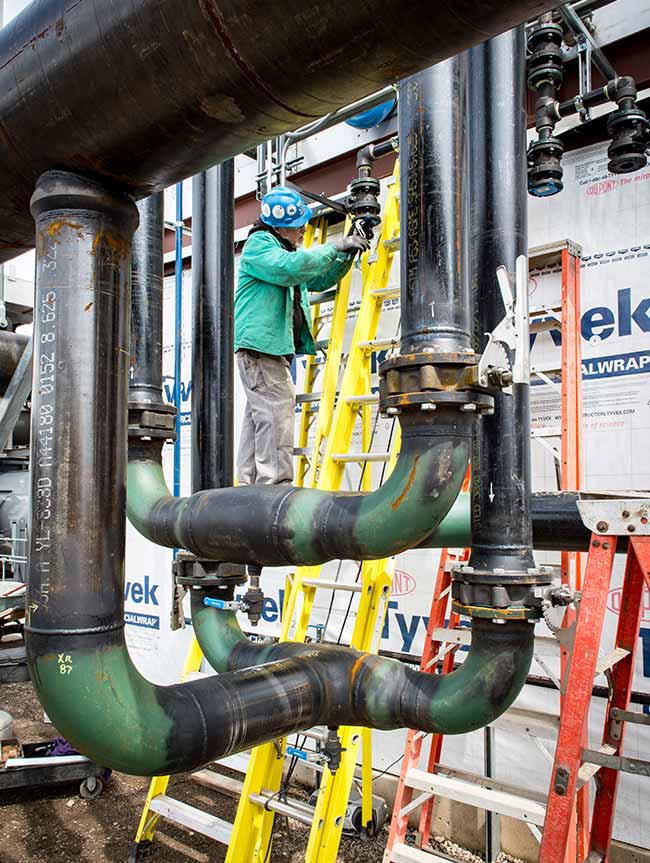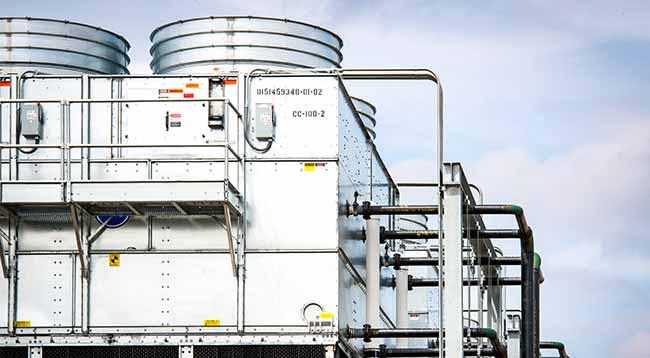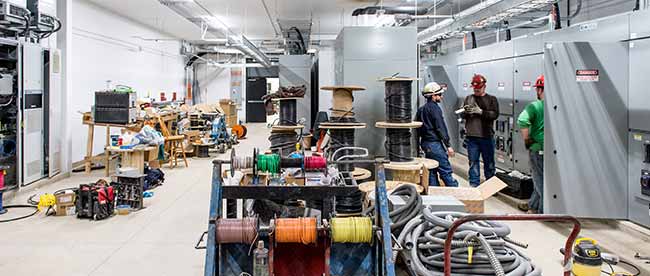Joshua Cameron is excited to let people see the awesome power that the Notre Dame Turbomachinery Laboratory will unleash at its June 7 grand opening.
The lab’s director, Cameron has spent the last two years designing the equipment, layout and engineering of a new 25,000-square-foot facility at Ignition Park in South Bend that dwarfs his former lab on the north side of campus.
He and Scott Morris, the lab’s research director, believe this new facility – with motors providing more than 12,000 horsepower – will fill a void in the market between small-scale university research and large-scale corporate testing of the turbine engine components that are used in everything from airplanes to electric power plants.
Cameron said typical costs for university research projects range from a few tens of thousands of dollars to less than a million dollars, while complete turbine engines undergoing final testing at a corporation can cost from a few million to hundreds of millions of dollars.
“It’s not safe to jump from small to huge,” Cameron said recently as his team of about 40 researchers, machinists and graduate students did final equipment tests. “That’s the gap Scott and I identified and wanted to fill. The response from the market so far shows that the gap existed.”



His previous research typically studied one row of compressor or turbine blades, but this new facility will allow testing of the flow and interaction between multiple rows of blades. Full-size turbine engines can contain dozens of blade rows rotating to create thrust or power by expelling hot gases from the core.
“We study the aerodynamics, thermodynamics and structural mechanics of big rotating machines,” Cameron said. “We’re interested in things like vibration, stability, flow and efficiency.”
It’s a high-potential market. One engine maker claims that a 16 percent increase in fuel efficiency in its new product cuts air carrier operating costs by $2 million a year and carbon emissions by 3,500 metric tons a year for each plane. Companies want the engines as efficient as possible, but also stable enough to work for long periods of time to justify the investment. Small changes make a real difference.
There are four test bays in the new facility. General Electric is currently preparing to start a project in one of the bays, and Notre Dame expects the other bays to be busy with collaborations with a diverse set of turbomachinery industry partners. The University signed a Center of Excellence agreement with aerospace manufacturer Pratt & Whitney, and through its previous work, the turbomachinery lab has developed relationships with sponsors and collaborators including Rolls Royce, Honeywell, Siemens, ANSYS, NASA and the Air Force Research Lab.
“We are very excited about the addition of Notre Dame as one of our University Centers of Excellence,” said Chris Kmetz, the vice president and chief engineer, Systems Design and Component Integration at Pratt & Whitney and 1991 Notre Dame graduate. “We’re committed to differentiating our products through investment in research and development, and Notre Dame has outstanding technical capabilities that complement our needs.”
“For us, this gives our students and faculty a unique capability – we can work in a research and development space no one else works in. It will help us draw the best faculty and graduate students to Notre Dame.”
Robert J. Bernhard, Notre Dame vice president for research
“For us, this gives our students and faculty a unique capability – we can work in a research and development space no one else works in. It will help us draw the best faculty and graduate students to Notre Dame,” said Robert J. Bernhard, Notre Dame vice president for research.
A second motive for building the lab was economic development. Rather than locate on campus, the Turbomachinery Lab was built at Ignition Park, an ideal site with built-in electric and gas infrastructure because Studebaker built cars there before its vacant buildings were recently demolished. Bernhard said applied research facilities often attract other businesses that want to supply, buy or hire from an industry leader. He said the lab can be a development generator for the community.
The $36-million project was first announced in 2014 as a public-private partnership with the City of South Bend, State of Indiana, Great Lakes Capital and Indiana Michigan Power. Building design and construction – including its massive pipes, heat exchangers and cooling stations – took about a year and a half. The electrical infrastructure rivals a small town. The move from campus to Ignition Park was completed at the end of January.
Cameron said the ribbon cutting announces that the facility is open for business. “It’s a chance,” he said, “to thank everyone for a huge investment and a huge vision.”